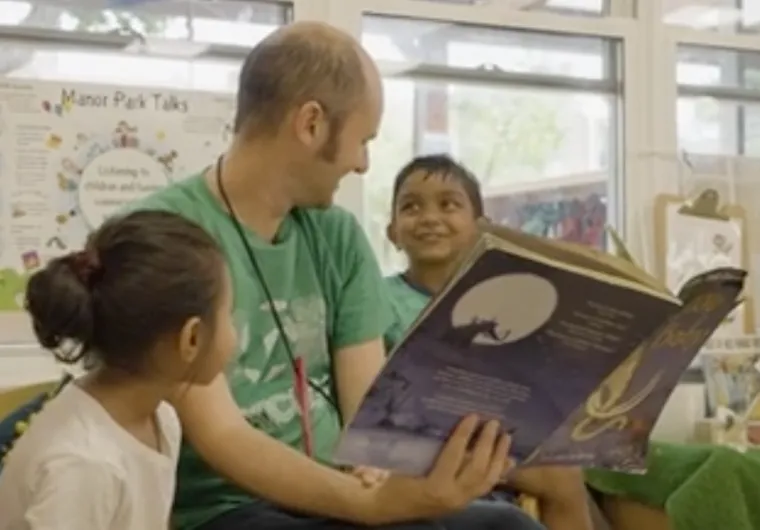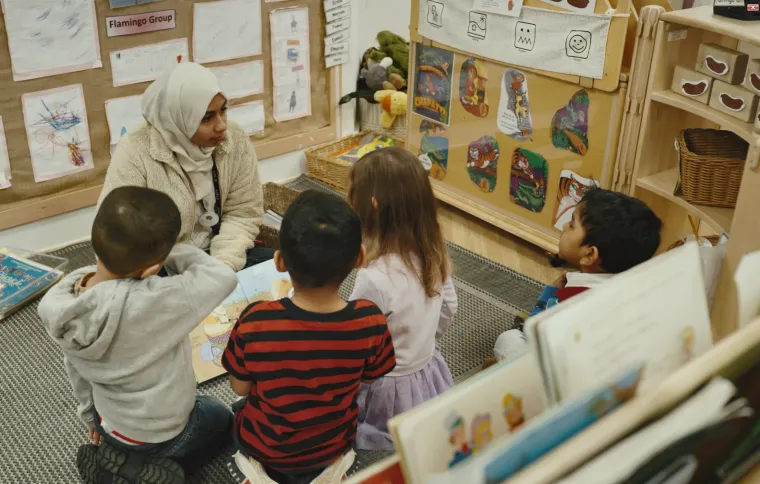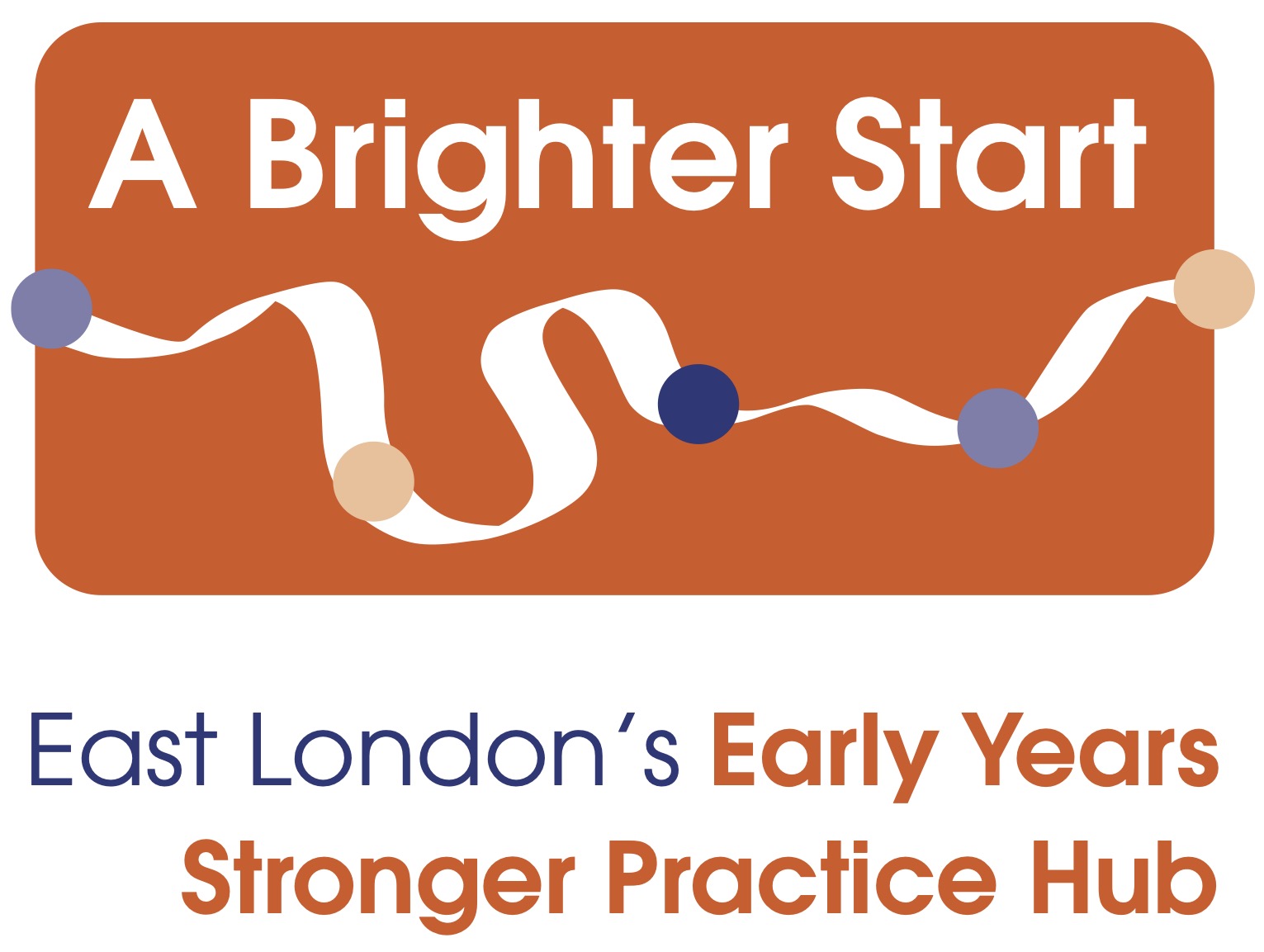Interactive reading, or sharing books is a particularly effective way of fostering early language skills in young children. Are you building this into your daily curriculum?
A blog by Fliss James, Director of East London Research School and Assistant Headteacher at Sheringham Nursery School and Children’s Centre...
Farah comes into nursery with her battered though much loved board book: ‘Shh! We Have a Plan.’ She’d been gifted it when her key person, Alex, visited her home. It’s her favourite book, as well as a source of comfort, connection and conversation.
Alex greets Farah and, noticing the book, whispers,‘Tiptoe slowly, tiptoe slowly…’
Farah giggles, tiptoes gently and then dives onto the sofa in the book corner exclaiming,‘GO!’
Farah turns to the page of the book where the characters tiptoe slowly with nets, trying to catch a bird.
Alex responds by following Farah’s lead:
F: Goooooooooo!!
A: Go! Oh no, the bird flew away.
F: The bird is gone … it’s up.
A: Yes, the bird has flown high up in the sky – they didn’t catch the bird in the net!
F: Goooooo! Hello birdie. Gooooooo!!
A: Ssh, SSH! We have a plan. They are thinking hard about how to catch the bird.
Did you know that success in education, higher levels of qualifications, higher wages and better health are all linked with strong communication and language skills in the early years (Health Equity in England: The Marmot Review 10 Years On, 2020)? Few things are as important as strong communication and language skills.

Research shows that one of the most powerful ways of developing early language is through interactive reading. Interactive reading offers a wealth of benefits for children’s communication and language development, cognitive skills and relationships with adults.
It is important to think what exactly we mean by this activity.
Key aspects of interactive reading:
It involves a conversation about a book: crucially, a back-and-forth conversation led by the child. The ShREC approach offers ideas of how adults can tune into the child letting them take the lead
it isn’t about reading the book with the child as audience, but rather using the book itself, and the words and pictures to engage in conversation. How we read books with children matters
the adult allows the child to become the teller of the story, enabling them to play an active role and talking about what they are interested in it introduces children to new ideas and more complex language that they don’t hear in day to day chat. As Professor Meredith Rowe (2022) states: 'One theme that is clear from the research to date is that children learn more when they are engaged in conversations than when they are merely exposed to words—the social-interaction is key.’
Who, when and how?
Interactive reading can be on a one to one basis or a in a small group. The main thing to remember is that all children benefit from it, especially those facing disadvantage.
We must ensure that children who may not initiate book sharing or who are seen as ‘not ready’ or ‘too young for books’ are regularly engaged in these experiences. It is never too early to introduce this activity.
This involves intentionally planning: dedicating protected times for interactive reading with every child. This is in addition to the spontaneous interactions that can occur throughout the day, as with Alex and Farah.
It is essential for all settings to prioritise interactive reading. Developing young children’s language skills cannot be left to chance.
Further reading:
EEF Early Years Evidence Store :description of interactive reading.
Details of the ShREC approach: 4 evidence informed strategies to promote high quality interactions.
Ofsted: Best start in life part 2: the 3 prime areas of learning

